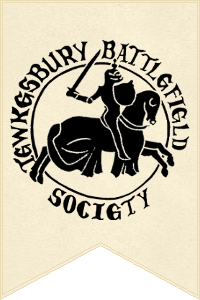April 10th 1471: A long blue gown of velvet
In London, the Lancastrian resistance effort was not going well. The Archbishop summoned anyone loyal to the House of Lancaster to join him at St Paul’s with as many men in harness of their servants and other as they could make. About 600 men joined them.
King Henry was brought out of his lodgings to be paraded around the city. He was preceded by his swordbearer, Lord Sudley, an elderly veteran of the Hundred Year’s war, and a horseman carrying the foxtail emblem of Henry V. Archbishop George Neville had to support Henry for the whole of the procession.
The party followed the customary processional route through the City, from St Pauls through Cheapside, Walbrook then back to St Pauls and the Bishop’s Palace, where King Henry was lodging. The display was intended to inspire men to join the Lancastrian cause, but the ‘Arrivall’ had doubts:
But, truth it is, that the rulers of the city were at the council, and had set men at all the gates and wards, and they, saying by this manner of doing, that the power of the said Henry, and his adherents, was so little and feeble as there and then was shewn, they could thereby take no courage to draw to them, ne to fortify their party, but rather the contrary, for so much as they saw well that, if they would so have done, their might was so little that it was not for them to have once attempted to have resisted the King in his coming, which approached near unto the city, and was that night at St Albans.
The Great Chronicle of London was even more damning: ‘It was more like a play than the showing of a Prince to win men’s hearts, and by these means he lost many and won right few, and ever he was shown in a long blue gown of velvet he had no more to change with’. They also observed that the sight of King Henry on parade had pleased the citizens of the city in the same way as a fire painted on the wall warmed an old woman.
The Lancastrian omens were not promising.

